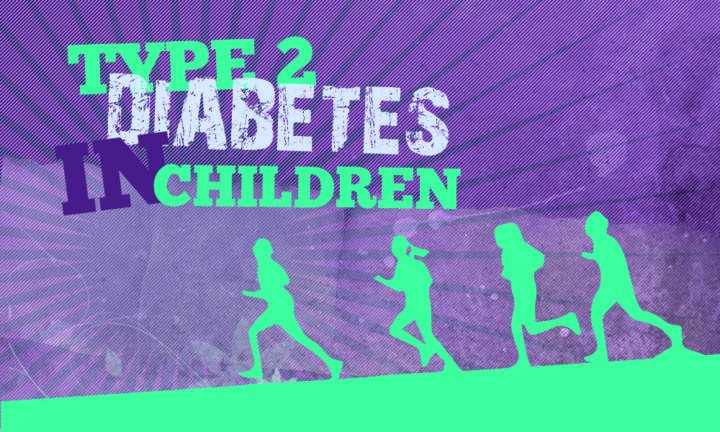Type 2 Diabetes in Children: The Problem is Big, and it is Getting Bigger

Back in the day, type 2 diabetes was called adult-onset diabetes, because no one was diagnosed with it until they were well into middle age or older. In 1997, however, the condition was renamed type 2 diabetes, because younger people were being diagnosed.
From 2001 to 2009, there was a 30.5 percent increase in type 2 diabetes in youth. There are now an estimated 5,000 new cases per year in the United States.
Type 1 diabetes (formerly called juvenile-onset) has always occurred in children, and it is not yet known how to prevent it. This article focuses on the rapidly increasing epidemic of type 2 in children.
Although family history is a risk factor, the main culprit of type 2 diabetes in children, by far, is being overweight, especially when that extra weight is around the middle. Type 2 diabetes is a serious problem for children. When not well controlled, they can develop complications more quickly and severely than adults and faster than children with type 1 diabetes.
Complications can include damage to small vessels in the kidneys and eyes and damage to the liver due to excess fat; and insulin-making cells in the pancreas (beta cells) lose function faster. Also, youth with type 2 diabetes tend to have related problems such as high blood pressure and high LDL (bad cholesterol), which all adds up to a greater risk of heart disease and stroke.
Children and teens with type 2 diabetes might feel no symptoms at all. Common warning signs include:
- Increased thirst
- Frequent urination, especially at night
- Blurry vision
- Feeling unusually tired
If you notice any of these symptoms in your child, contact a health care provider.
When a child has diabetes, the whole family has diabetes. In other words, everyone in the family must get on board by making healthy lifestyle changes. The American Diabetes Association recommends that children with diabetes and their families have a multidisciplinary team to work with. This team would include a physician, nurse diabetes educator, registered dietitian and psychologist or social worker.
Working toward a healthy weight, by following a balanced diet and being more active, will help with blood sugar control and aid in preventing complications.
Here are some tips:
- Limit fast food
- Involve children in weekly, healthy meal-planning sessions
- Invite the children into the kitchen to help prepare meals
- Keep junk food out of the house, limiting foods like candy and chips to occasional treats
- Eat plenty of veggies and a couple of servings of fruit per day
- Skip the liquid candy (soda) and drink water or water infused with fruit (lemon, oranges), veggies (cucumber) or herbs (mint, stevia)
- Make healthy snack foods easy to grab — fruit, veggie sticks or plain popcorn
- Don’t have sitting disease. Every 30 minutes, get up and move for two minutes
- Limit screen time to no more than two hours a day, including TV, computers, video games and phone
- If homework requires more than two hours, set up a standing station for the computer
- Exercise. Find things to do that are fun. Children should get one to two hours of exercise most days of the week
Here are some tips for applying the recommendations to the Easter candy that might have accumulated during the holiday:
- Focus on the non-candy Easter basket items like colored eggs or toys
- Remove the candy from the basket and keep it put away
- Encourage children to trade candy for another prize at an upcoming party or gathering
- When a portion of candy is allowed, check the label and limit the amount to no more than 20 grams of carbohydrates
Remember that this is good advice for all family members.
Type 2 Diabetes Quick Facts
- One-third of all South Carolina high school students were overweight or obese in 2012.
- Most South Carolina youth do not meet the recommendations for eating fruits, vegetables, or whole grains daily.
- Empty calories from added sugars and solid fats contribute an average of 40 percent of the daily calories for children and adolescents aged 2-18 years.
- Less than one-third of high school-aged females reported that they were physically active for at least 60 minutes for five or more days per week.
- 50.1 percent of all South Carolina children reported watching two or more hours of television on an average school day.
- In 2012, 34.7 percent of high school students reported that they did not participate in any physical activity during the past seven days, with 77.8 percent of all high school females not participating in any physical activity in the past seven days.
Source: SCDHEC
Anita Longan, RDN/LD, CDE, BC-ADM, is a registered dietitian and nutritionist who provides a variety of diabetes and nutrition programs and counseling at the Diabetes and Nutrition Center at the HopeHealth Medical Plaza in Florence.
This article also appears on the Morning News website, www.scnow.com.